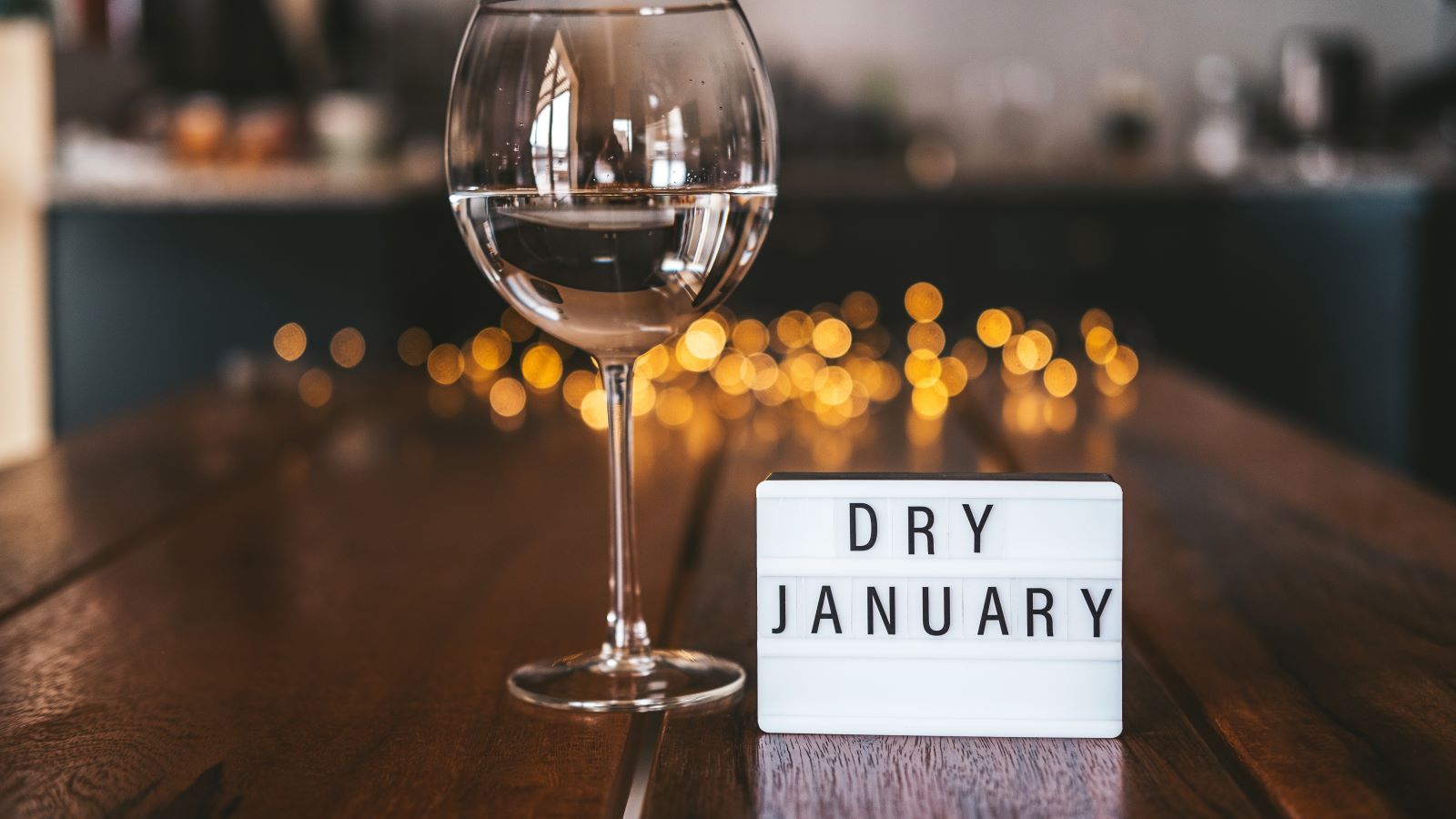<< Back
5 Steps for a Successful Dry January

January 12, 2024
After a boozy holiday season, many of us are ready for a chemical reset right around the time we ring in a new year. Enter: Dry January, a challenge to stop or cut back on alcohol.
But like any habit change, starting Dry January is one thing. Completing it is another.
We asked an expert for how to finish the month strong — and carry those healthy habits through the rest of the year.
Step 1: Throughout Dry January, aim for awareness.
“Alcohol consumption is so interwoven into our lives these days and into the holidays, people can lose track of how they’re drinking,” says J. Craig Allen, MD, vice president of addiction for Hartford HealthCare and medical director of Rushford, part of the system’s Behavioral Health Network.
So each time you’re tempted to reach for a drink, pause to notice why. Is it social pressure? Stress? Boredom? More awareness will help you set up strategies to avoid temptation.
Step 2: Define your goals for cutting back— the more specific, the better.
“The most important thing is to make a plan and say, ‘Here is what I’m trying to accomplish,’” says Dr. Allen. “Some people say ‘Dry January’ meaning ‘zero, zilch I’m not going to drink any more.’ That’s fine if that’s the challenge you want to take on. But cutting back could make more sense.”
If you’re going for a “Damp January,” try using something like the national guidelines for safer drinking. For men, that’s roughly two drinks a night or less than 14 drinks a week. For women, it’s one drink a night or less than eight drinks a week.
Step 3: Make a plan for when temptation strikes.
“There are different strategies people can use when they’re actually in a situation where alcohol might be involved,” says Dr. Allen.
Four plans you can use are:
- Communicate. Let your friends and family know upfront about your Dry January commitment, so they can cheer you on.
- BYOB. When you’re headed to a social event, carry non-alcoholic drinks with you — whether that’s your favorite sparkling water, a canned mocktail or a nonalcoholic beer.
- Try the buddy system. Team up with a friend who’s also avoiding alcohol. Even a long-distance accountability partner can help. “There are a lot of support groups out there on the internet,” says Dr. Allen.
- Answer the question “Why am I doing this?” Maybe you want to cut down on the hangovers. Maybe you want to get a better night’s sleep. Keeping your motivations in mind can strengthen your resolve to make it through the month.
> Related: 6 Signs Your Drinking Might Be More Than Just a Habit
Step 4: At the end of Dry January, do an audit.
Ask yourself: How did it go? What were my biggest challenges? Why?
“Taking a break or taking a step back can give you a better idea of what your relationship really is with alcohol and why you’re drinking,” says Dr. Allen.
Step 5: If you notice withdrawal symptoms or worry about your relationship with alcohol, talk to an expert.
“Dry January or cutting back is really for people who are social drinkers. If someone actually has an alcohol use disorder, they should talk to their doctor,” says Dr. Allen.
An addiction specialist can offer the care and support you need to safely decrease your drinking. Which means your Dry January will lead to a healthier February, March and beyond.